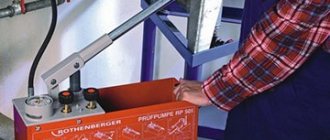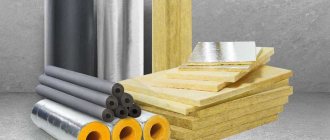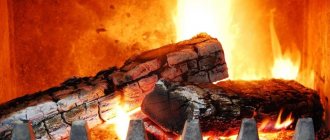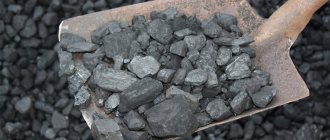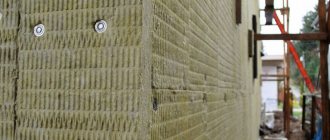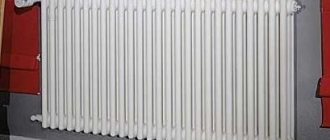Types of flammable substances
The first group of flammable substances includes solid materials that can be of artificial or natural origin.
Most often these are organic substances, which include chlorine, fluorine, and silicon. Solid combustible materials also include some types of alkali and alkaline earth metals. When calculating fire safety systems and ventilation shafts, it is necessary to take into account that solid flammable substances often become explosive when crushed. The group of solid combustible substances includes:
1.
Various types of wood in the form of boards, timber, sawdust, firewood, and chips.
2.
Solid compositions made on the basis of cellulose.
These are plywood sheets and chipboard, paper, cardboard. 3.
Tree processing waste: twigs, chips, bark.
4.
Dry grass, hay, pine needles, fallen leaves.
5.
Raw materials for the production of cereals.
6.
Textiles and fabrics made from natural materials, wool and cotton products, linen items.
7
.
Synthetics and fabrics with the addition of polymer compounds. 8.
Coal and peat.
9.
Plastics and petroleum-based plastic products.
10.
Plant resins and paraffin.
11.
Rubber and leather items.
12.
Metals with a high degree of activity - aluminum, potassium, sodium and their alloys.
1 3.
Compounds and alloys of sulfur, phosphorus, silicon, selenium.
14.
Dust and sawdust obtained by grinding flammable substances.
Fires of solid combustible substances and materials are classified according to the material’s ability to smolder. The first group includes wood, paper, fabric and other materials that can support smoldering. Another category includes materials such as plastic and rubber.
The second group is represented by flammable substances in liquid form. The most flammable are various types of fuel.
Liquid flammable compositions include:
1.
Oil and its components.
2.
Petroleum derivatives such as gasoline, kerosene, fuel oil, lubricating oils for machinery.
3.
Varnishes and paints made from organic solvents.
4.
Ethyl, isopropyl, methyl and other alcohols.
5.
Degreasing liquids and solvents - toluene, acetone, white spirit and others.
These substances are also dangerous because they can evaporate. At the same time, a concentration of a substance is reached in the air that can provoke an explosion or fire. The third group of flammable substances consists of gases , including: 1.
Gases found in natural deposits - shale gas, mine gas, compounds of methane, hydrogen and hydrogen sulfide.
2.
A mixture of gases used for supply to residential buildings.
3.
Propane, isobutane, butane and other gases.
As is the case with solid flammable compounds, which retain the ability to spontaneously ignite even when crushed, liquid and gaseous mixtures pose a danger in the form of vapors. Many liquids and gases combine with oxygen to form a dangerous mixture. For this reason, those warehouses in which they are stored are classified as category “A”. If a dangerous concentration of a flammable substance is created, just one spark is enough to start a fire.
Flammability groups
All materials can be divided into three groups in accordance with Federal Law-123 standards:
1.
Non-flammable.
This group includes compounds that are not capable of burning in the presence of oxygen.
2.
Low-flammability.
Materials in this group ignite only when near an open flame or under the influence of strong, prolonged heat.
3.
Flammable.
In turn, they are divided into flammable and especially dangerous. Flammable are flammable substances and materials that ignite upon brief and short contact with fire.
This classification applies to all substances, with the exception of fabrics, leather and building materials. To determine the degree of flammability, tests are carried out regulated by fire safety standards.
Article 13 of Federal Law No. 123 provides for the classification of fabric materials and building compositions according to flammability groups:
1. Non-flammable
(symbol NG).
2. Low-flammable (G1).
When such substances ignite, gases with a temperature of no more than 135 ° C are released. Damage to the material itself as a result of combustion does not exceed 65%, while the mass decreases by no more than 20%. If the source of fire is removed, the material stops burning.
3. Moderately flammable (G2).
During combustion, the gas temperature is up to 235 ° C, damage affects 85% of the original volume. As a result of testing, the mass of the sample decreases by 50%. Once the flame source is removed, the moderately flammable substance can sustain combustion for up to 30 seconds.
4. Normally flammable (G3).
The flue gas temperature is up to 450 °C, the degree of damage and weight reduction are similar to group G2. In this case, the substance can maintain combustion in the absence of a fire source for up to 300 seconds.
5. Highly flammable (G4).
Such compositions emit gases with temperatures above 450 ° C when burned. The degree of damage exceeds 85% of the material area, the mass is reduced by more than 50%. The duration of combustion after the flame is removed is more than 300 seconds.
In addition to the degree of flammability, the characteristics of the substance also indicate its condition. For example, fuels and lubricants, flammable liquids and solid compounds, flammable and explosive gases are classified into separate groups.
Occupational Safety and Health
According to their state of aggregation, all substances and materials are divided into solid, liquid and gaseous.
Depending on their composition and structure, solids behave differently when heated. Some of them (sulfur, rubber and stearin) melt and evaporate.
Others, such as wood, peat, coal and paper, decompose with the formation of gaseous products and a solid residue (coal). There are substances that do not melt or decompose when heated (coke, anthracite and charcoal).
As you know, it is not the solid substances themselves that burn, but the gaseous and vaporous products released during decomposition and evaporation during the heating process.
Thus, most flammable substances, regardless of their initial state of aggregation, turn into gaseous products when heated. In contact with air, they form flammable mixtures that pose a corresponding fire hazard. To ignite such mixtures, a powerful and long-lasting ignition source is not required. They ignite even from a spark.
Liquid combustible and flammable substances (petroleum products, vegetable oils, aromatic hydrocarbons, alcohols, ethers, aldehydes, ketones, organic acids, etc.) evaporate when heated, and the pressure increases accordingly.
•Flammable (flammable liquids) and combustible liquids (CL) are divided into four classes (categories) according to the degree of fire hazard. flammable liquids and gases belong to one or another class depending on the flash point of their vapors:
1st class - petroleum products and crude oil; vapor flash point 28° C and below;
2nd class - petroleum products and crude oil; flash point of vapors above 28 to 45 ° C inclusive;
3rd class - petroleum products and crude oil; flash point of vapors above 45 to 120 ° C inclusive;
4th class - petroleum products and crude oil; vapor flash point is above 120° C.
Combustible gases (hydrogen, acetylene, ammonia, coke oven, 1 generator, water, natural and other gases) have greater fluidity and diffusivity than flammable liquids. Therefore, the formation of a flammable environment outside the container in which the gas is located is possible in cases where it escapes through leaks and damage to the container. If the gas stream escaping through the leaks is immediately ignited, explosive concentrations will not arise, the gas will burn, forming a flame torch. Creating a flammable environment inside a gas container is only possible if there is a sufficient amount of air in it.
Flammability group . VNIIPO divides substances and materials according to flammability into: non-flammable, low-flammable and combustible... the latter, in turn, are divided into flammable and low-flammable.
Non-flammable are substances and materials that do not burn in air.
Refractory are substances and materials that ignite when exposed to an ignition source, but are not capable of spontaneous combustion after its removal.
Combustible substances and materials are those that are capable of igniting, as well as igniting from an ignition source and continuing to burn independently after its removal.
Relatively flammable include flammable substances and materials with a reduced fire hazard, which, when stored outdoors or indoors, cannot ignite even with prolonged exposure to a low-calorie ignition source (match flame, spark, hot electrical wire, etc.). Such substances and materials ignite from a relatively powerful source when a significant part of them is heated to the ignition temperature.
Flammable substances include combustible substances and materials with an increased fire hazard, which, when stored outdoors or indoors, can ignite without preheating from short-term exposure to a low-calorie ignition source.
The flammability group of substances and materials is taken into account when developing fire safety standards and fire safety regimes.
In river transport, the flammability group is used to classify dangerous goods transported on ships.
The degree of flammability of building materials and structures is determined in accordance with “Building Norms and Rules” (SNiP) II-A.5-62 “Fire requirements. Basic principles of design."
Zone of ignition of gases and vapors in the air. The ignition zone of gases (vapors) in the air is the area of concentration of a given gas in the air at an atmospheric pressure of 760 mm Hg. Art., inside which its mixture with air is capable of igniting from an external ignition source with the subsequent spread of combustion to the entire volume of the mixture.
The minimum or maximum content of gas (or vapor) in air (or oxygen), at which a flame arising from an external ignition source can spread unlimitedly throughout the entire volume of the mixture, is called the concentration limit of ignition of gases and vapors of Liquids.
The limiting concentrations of the ignition zone are called the upper and lower limits of ignition of gases (vapors) in air, respectively. The value of the lower limit of ignition of gases in the air is taken into account when classifying production facilities by fire hazard in accordance with SNiP II-M.2-62 “Industrial buildings of industrial enterprises. Design standards".
The values of ignition limits are used when calculating the permissible concentrations of gases inside explosive technological devices, recovery systems, ventilation, as well as when establishing the maximum permissible explosive concentration of gases (vapors) when working with fire and sparking tools.
Temperature limits for ignition of vapors in air.
Temperature limits for ignition of vapors in air are those temperatures of a substance at which its saturated vapors, being in equilibrium with the liquid or solid phase, form concentrations in the air equal to the lower or upper flammability limits, respectively.
The values of the temperature limits of ignition are used when calculating the safe temperature conditions of closed < apologetic devices with liquids and volatile solids operating at atmospheric pressure.
VNIIPO considers the safe environment for the formation of explosive vapor-air mixtures to be an individual substance temperature 10° below the lower or 10° above the upper temperature ignition limits.
If the temperature regime of the apparatus is in the area of “water temperatures” or at least coincides with it for a short time, VNIIPO recommends taking measures to phlegmatize explosive vapor-air mixtures with inert gases, special phlegmatizing substances and other means.
Flash point. Combustible gases and solid crushed substances (dust of combustible substances) form flammable mixtures at any temperature, solid substances, as well as liquids - only at certain temperatures within the minimum (lower) and maximum (upper) concentration limits.
When a spark or open fire is introduced into an environment with a concentration of vapors or gases equal to the lower concentration limit of ignition, they flare up, but the product itself (flammable substance) does not ignite.
Flash point is the lowest temperature of a flammable substance at which vapors or gases are formed above its surface that can ignite in the air from an external ignition source; stable combustion of the substance does not occur. At the flash point, only the resulting mixture of vapors or gases with air burns instantly.
Flash point is the main indicator of the degree of flammability of flammable liquids and is taken as the basis for their classification according to the degree of fire hazard. It is taken into account when classifying production facilities, premises and electrical installations according to the degree of fire danger in accordance with
SNiP and Rules for the Construction of Electrical Installations (PUE), when pi (fire-fighting measures to ensure fire safety and safety during loading, unloading, transportation, as well as during cleaning, degassing and repair of oil tankers.
Self-heating . All flammable substances in air at certain temperatures oxidize, releasing heat, and depending on their structure and properties, on the speed of the process of heat release and removal, they are capable of self-heating.
Self-heating of some substances can occur not only as a result of oxidation, but also as a result of a number of physical and biological phenomena. The self-heating temperature is the lowest temperature at which practically various exothermic processes of oxidation, decomposition, etc. occur in a substance or material.
Self-heating temperatures can potentially pose a fire hazard. Its value is used to determine the conditions for safe long-term (or constant) heating of a substance. VNIIPO considers a safe temperature for constant heating of a given substance or material to be a temperature not exceeding 90% of the self-heating temperature. The process of self-heating under certain conditions can turn into combustion. These conditions are created at the temperature of self-ignition of the substance.
Self-ignition . Self-ignition is a phenomenon when, at the lowest temperature of heating a substance without the external influence of a flame or a hot body, a sharp increase in the rate of an exothermic reaction occurs, leading to the occurrence of flaming combustion.
The self-ignition temperature of gases and vapors of flammable liquids is taken into account when classifying them into explosion hazard groups when choosing the type of electrical equipment, temperature conditions for the safe use of a substance during intense heating; when calculating the maximum permissible heating temperature of non-insulated surfaces of technological, electrical and other equipment; when investigating the causes of fires, when it is necessary to determine whether a substance could spontaneously ignite from a heated surface.
The maximum permissible temperature for safe heating of non-insulated surfaces of technological, electrical and other equipment, according to VNIIPO, is 80% of the self-ignition temperature of gases or vapors, determined in degrees Celsius.
The self-ignition temperature of solid substances is taken into account when establishing the causes of fires and when choosing optimal modes of short-term heating of substances. It cannot be used to determine the maximum permissible temperature for safe heating of uninsulated surfaces of technological, electrical and other equipment.
Spontaneous combustion. Some substances ignite only when heated to the auto-ignition temperature, while others do not ignite, since the environment has already heated them to the auto-ignition temperature.
The ability of substances to ignite without heating as a result of self-heating before combustion occurs is called spontaneous combustion, and the ignition of substances due to heating at a certain self-ignition temperature is called spontaneous combustion.
Spontaneous combustion is possible in cases where flammable materials impregnated with vegetable oils, as a result of the oxidation of fats and oils, emit a significant amount of heat causing ignition of both fats and materials.
Fibrous materials impregnated with oil (according to the degree of oxygen absorption) have varying degrees of fire hazard. The most dangerous are: linseed oil, blubber, linseed, hemp, nut and poppy seed oils; dangerous - sunflower, teak, rapeseed and castor oils; less dangerous - olive and bone oils, goose fat, beef and lamb lard; low-risk - cow butter, beeswax and coconut oil.
Self-igniting substances include: oils and fats, iron sulfides; plant products; coal, and i>rf; chemical substances. Based on the spontaneous combustion temperature, the degree of fire hazard of the thermal regime of the return of substances and materials and the conditions of their storage are determined.
Ignition . The ignition temperature is the lowest temperature of a combustible substance, meaning that the latter emits flammable vapors or gases at such a speed that, after ignition under the influence of an external ignition source, stable combustion occurs.
Among gases, only their flammable mixtures can ignite, for example, a mixture of methane with air, gasoline vapor and other flammable liquids with air or oxygen.
The ignition of liquids upon contact with air occurs in two stages: first, the liquid evaporates, forming a flammable mixture of vapors and air;
then, upon contact with a flame, this mixture ignites. {module 43}
Regulatory requirements for flammable substances
Considering that the range of uses of flammable substances is quite wide, and improper handling of them can lead to serious consequences, a number of laws and regulations have been developed governing the rules for handling hazardous compounds:
1.
Federal Law No. 116-FZ, which regulates the rules for compliance with safety requirements at production facilities.
2.
Codes of rules 231.1311500.2015 and 156.13130.2014, establishing rules for compliance with fire safety in the design and construction of oil and gas fields, fuel and lubricants warehouses and gas stations.
3.
The Forest Code of the Russian Federation also contains rules for observing fire safety when in the forest. The methodology and methods for protecting forests from fire are described in GOST R 57972-2017.
4.
The rules for storing wood and logs in a warehouse are regulated by Code of Practice 114.13330.2016. It also establishes the requirements that must be met when processing wood and harvesting lumber.
5.
The procedure for using flammable substances used in construction, including compositions intended for finishing buildings of 1-3 degrees of fire resistance, is set out in SNiP 21-01-97.
6.
The methods and procedure for determining characteristics related to the fire and explosion hazard of substances are specified in GOST 12.1.044-89.
7.
GOST 30247.1-94 informs about the procedure for testing to determine the fire resistance of various building elements, including flammable substances used when laying roofs, floors, enclosing and supporting structures.
8.
The rules and methodology for testing substances to establish a flammability group are determined by GOST 30244-94, and methods for carrying out the same actions by fire propagation groups are set out in GOST R 51032-97.
9.
Fire safety rules on ships regulate the implementation of fire safety standards during various operations and transportation of flammable goods.
10.
RD 34.03.307-87 was issued for enterprises in the energy sector. This act sets out safety requirements when working with fire and using flammable compounds in various states as fuel.
The main document regulating fire safety standards at protected sites is the Fire Safety Rules in the Russian Federation.
Classification of materials
The main document defining methods for classifying materials by flammability classes is GOST 30244-94. This regulatory act sets out methods for testing materials and distinguishes two groups:
- non-flammable "NG";
- flammable "G".
The non-flammable group includes compounds that can withstand the following tests:
- reduction in the mass of the substance being tested - no more than 50%;
- the temperature should rise by no more than 50%;
- Stable burning time with open fire is up to 10 seconds.
All types of materials that participated in the tests and did not pass even one of the criteria are classified as flammable. Construction objects also differ in fire resistance. Among this category, two types of development can be distinguished:
1.
All structural parts are made of non-flammable compounds.
The main load-bearing elements have a maximum degree of fire resistance, allowing them to withstand up to 2 hours of exposure to an open flame. 2.
The difference in the second category is the use of metal structures that are not treated with fire protection. Metal elements should be used to create openwork elements of trusses, beams and other samples in the roof area of a building. In this case, the fire resistance limit will be 1.5 hours.
Objects that meet the above fire resistance requirements to the greatest extent meet fire safety standards. As an additional classification of non-flammable compounds used in the construction, reconstruction and repair of structures, several types of division are used.
Depending on the type of product produced, substances are divided into:
- produced in the form of a roll, tile, technological sheet;
- in the form of a bulk substance;
- in the form of rigid elements, such as metal trusses or reinforced concrete slabs.
Depending on the purpose of the product:
- finishing decorative materials, for example, tiles for various purposes or wall panels;
- building structures produced in finished form, for example, slabs, bricks, floors;
- bulk materials for various purposes, heat-insulating and sound-proof molded products.
Procedure for storing flammable substances
For each enterprise and the type of substances and materials used and stored there, its own regulatory act is applied, taking into account the specifics of the organization.
There is a noticeable difference between a warehouse for finished wood products and an oil depot, between a chemical industry plant and a tanker. The nature of the material used, the features of the technologies used and the procedure for storing substances determine the difference in the approach to ensuring safety standards. At the same time, we can identify a group of fire safety requirements that are equally applicable in all areas of economic activity:
1.
Equipping the fire safety system of the facility with various technical means of extinguishing fires and warning systems for early detection of a fire.
2.
Organization of storage, processing and use of explosive and fire hazardous substances outside of specially designated facilities. Regardless of the condition, all hazardous materials must be located in special areas or warehouses.
3.
The volumes of substances stored must be limited. Whatever the condition of the material, it must be distributed among storage facilities in batches that do not exceed the maximum permissible standards.
4.
Compliance with standards for providing protected facilities with fire infrastructure, including reservoirs, water supply systems, hydrants, and taps. For an uninterrupted water supply, the enterprise must be equipped with both an internal and external fire-fighting water supply circuit. Fire breaks should be located between individual objects of the organization.
Added: 05/21/2020
